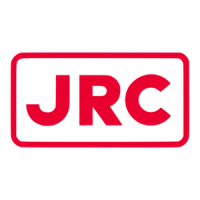- 6 -
6 Battery Charging
6.1 Battery charging
NEVER incinerate used battery packs. Internal battery gas may cause an explosion.
NEVER immerse the battery pack in water. If the battery pack becomes wet, be sure to wipe it
dry immediately (particularly the battery terminals) BEFORE attaching it to the transceiver.
Otherwise, the terminalswill become corroded, or cause connection failure,etc.
AVOID leaving the battery pack in a fully charged, or completely discharged condition for long
time. It causes shorter battery life. In case of leaving the battery pack unused for a long time, it
must be kept safely after discharge, or use the battery until the battery indicator appears, then
remove it from the transceiver. If your battery pack seems to have no capacity even after being
charged, fully charge the battery pack again. If the battery pack still does not retain a charge (or
very little), a new battery pack must be purchased.
Prior to using the transceiver for the first
time, the battery pack must be fully charged
for optimum life and operation.
CAUTION!
To avoid damage to the transceiver, turn it
OFF while charging.
○
1 Recommended temperature range for
charging:
Recommended temperature range for
charging:
+0°C to +40°C (+32°F to+104°F)
The Li-Ion battery functions within -20°C
to +60°C (-4°F to +140°F).
○
2 Use the specified chargers
(NZB-139, NZB-141 and NZB-142).
○
3 NEVER use another manufacturer's
charger.
○
4 NEVER use another manufacturer's AC
adapter.
Recommendation:Charge the supplied
battery pack for a maximum of up to 10
hours. Li-Ion batteries are different from Ni-
Cd batteries in that it is not necessary to
completely charge and discharge them to
prolong the battery life. Therefore, charging
the battery in intervals, and not for extended
periods is recommended.
CAUTION!
NEVER insert battery pack/transceiver (with
the battery pack attached) with wet or soiled
into the charger.This may result in corrosion
of the charger terminals or damage to the
charger. The charger is not waterproof and
water can easily get into it.

